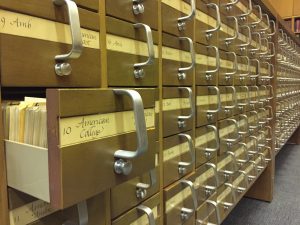“Townspeople took four brass cannon”
- 4 June 1773: “King’s birthday; general training; the grandest appearance ever known in these parts.”
Colo. [John] Hancock & Company of Cadets, Major [Adino] Paddock & Artillery, Colo. [John] Erving & the Regiment, Colo. [David] Phipps & Company all made their appearance in the Common — Such a Quantity or Rather Multitude of People as Spectators I never saw before, they behaved very well.Phips commanded the horse guards.
- 1 July: “Major Paddock’s son drowned at Cambridge River.”
- 15 September: “General training.”
- 22 September: “General training for the last time this year.”
- 12 November: “Workmen began to set another row of elms in the common.”
Gen. Thomas Gage arrived as the new royal governor in May 1774, and the following summer was punctuated by the arrival of more army units, including companies of Royal Artillery:
- 2 July: “A.M. Artillery from Castle William landed, with eight brass cannon, and encamped in the common. 258 sheep given for the relief of this town by the town of Windham, in Connecticut. (I cut my hair off.)”
- 6 August: ”The Scarboro. man-of-war arrived, nine weeks from England; P.M. three transports from Halifax, with the 59th Regiment on board, and company of artillery, and brass cannon, eight days out.”
- 7 August: “A.M. three transports from New York with the Royal Regiment of Welsh Fusileers and detachment of Royal Artillery, and a quantity of ordnance stores, &c.”
- 8 August: “Company of artillery landed; encamped in common.”
- 1 September: “This morning, half after four, about 260 troops embarked on board thirteen boats at the Long Wharf, and proceeded up Mystic River to Temple Farm, where they landed; went to the powder-house on Quarry Hill, in Charlestown bounds, from whence they have taken 250 half-barrels of gunpowder, the whole store there, and carried it to the castle. A detachment from this corps went to Cambridge and brought off two field-pieces.”
- 2 September: “From these several hostile appearances, the county of Middlesex took the alarm, and on last evening began to collect in large bodies, with their arms, provisions, and ammunitions, &c. This morning some thousands of them advanced to Cambridge, armed only with sticks. The committee of Cambridge sent express to Charlestown, who communicated the intelligence to Boston, and their respective committee proceeded to Cambridge without delay. Thomas Oliver, S[amuel]. Danforth, J[oseph]. Lee, made declaration and resignation of a seat in the new constituted council, which satisfied the body. At sunset, they began to return home. At dark, rain and thundered very hard.”
- 3 September: “Four large field-pieces were dragged from the common by the soldiery and placed at the only entrance into this town by land. The Lively frigate, of twenty guns, came to her mooring in the ferry-way between Boston and Charlestown.”
- 5 September: “Artillery training.”
- 15 September: “Last night all the cannon in the North Battery were spiked up: it is said to be done by about one hundred men (who came in boats) from the man-of war in this harbor.”
- 17 September: “Last night, townspeople took four brass cannon from the gun-house near very near the common.”
Newell’s diary entry shows that many Bostonians knew about those events even though they were never reported in the newspapers or in Gen. Gage’s letters to the government in London.
- 20 September: “Some cannon removed (by the man-of war’s men) from the mill-pond.”
- 3 October: “Artillery training for the last time this year.”
- 22 October: “This morning, about 7 o’clock, after three days’ illness, Mr. William Molineaux died, in the fifty-eighth year of his age. (A true son of liberty and of America.) It may with truth be said of this friend, that he died a martyr to the interest of America. His watchfulness, labors, distresses, and exertions to promote the general interest, produced an inflammation in his bowels, of which he died. ‘Oh, save my country, Heaven,’ he said, and died.”
- 23 October: “This day four transports arrived here from New York, with a company royal artillery, a large quantity of ordnance stores for Castle William, three companies of the Royal Regiment of Ireland, or the 18th Regiment, and the 47th Regiment on board.”
Ultimately those efforts led to the British army’s march to Concord and to war. I’ll tell that story at the Scituate Historical Society this week.
Thursday, 15 May, 7–8:30 P.M.
Secrets on the Road to Concord
G.A.R. Hall, 353 Country Way, Scituate
Admission is $15, or $10 for society members. Reservations are recommended, but payment will be accepted at the door. I look forward to meeting folks there.
TOMORROW: Thomas Newell and the tea.














